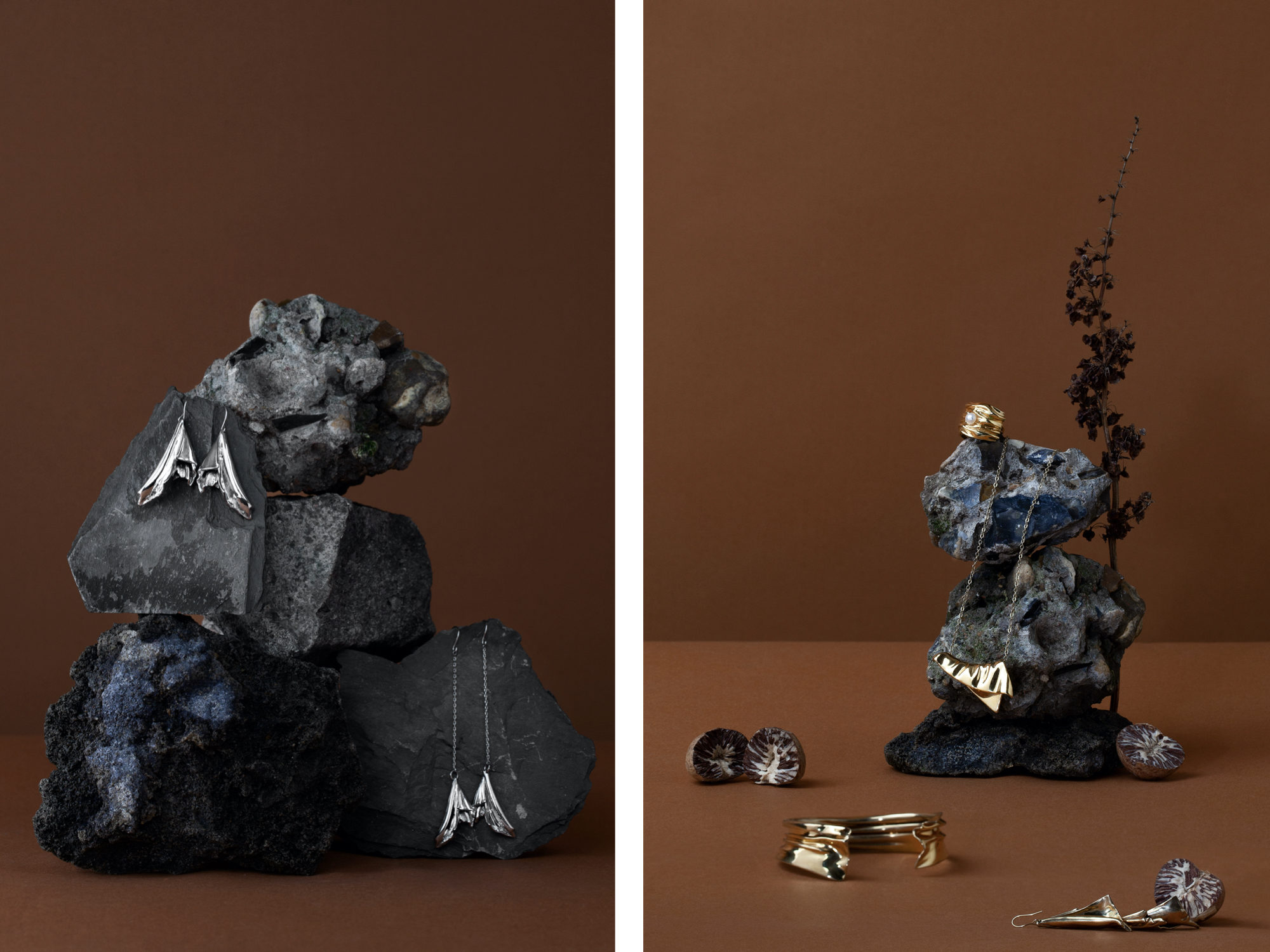Caroline Quinio has always been drawn to how fabrics interact with the human body, especially the organic, free-flowing shapes that emerge when a ballerina dances across the stage. “Like a shadow, the shapes created by fabric are defined by the body, but they take on a life of their own based on the material, shape, and movement of the person wearing it,” says the founder of New York design studio Plaitly, which debuts a jewelry line that explores this very sensation. Called the Drapery Collection, the gold and silver necklaces, bracelets, and earrings seem to capture these fleeting moments. The pieces of jewelry, named Plié, Cambré, and En l’Air for particular ballet positions, evoke fabrics rippling in the wind or draped over the human body.
To achieve the gentle billowing effects, Quinio digitally designed each piece using a custom algorithm that simulates gravity forces on fabrics in a virtual environment that she creates. “Each piece begins as a simple shape, such as a square, triangle, rectangle, or circle, that is draped along a chain in the environment,” she says. This makes the pieces appear as if they were “designed indirectly as opposed to being directly sculpted into a desired shape.” From there, she 3D-prints each piece in wax, hand-casts them in metal, and hand-polishes them to a glossy finish. “3D printing was key to getting these complex forms out of the computer,” she says, noting how each piece retains elements of both her virtual and handcrafted techniques.


